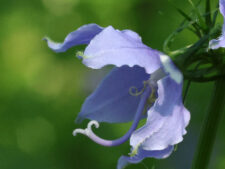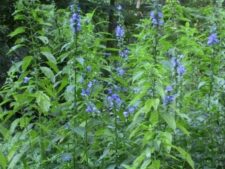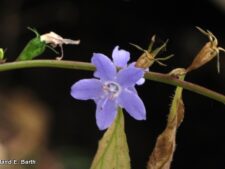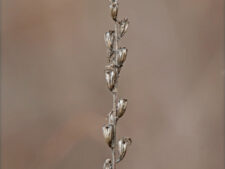
This native annual or biennial has an erect stem up to 6 feet tall. Late in the season, likely because they have been browsed by deer, some may only be a few inches tall. The alternate, toothed, lance-shaped leaves are up to 6 inches long (A). Flowers are light blue with white, ring-shaped centers (B,D); they have 5 pointed petals with wavy margins and an unusual curved style divided into 3 stigmas at its tip (C). The flowers are on long spikes and open a few at a time to bloom throughout the summer and fall. Fruit is a tapered, flat-topped capsule containing many seeds (E).
Grows in woodlands and edges, flowering mainly from June through September, occasionally as late as November – Image E was taken at Fontenelle Forest in November. Tall Bellflower is common in upland and floodplain woods and edges at both Fontenelle Forest and Neale Woods.
Native Americans used a leaf tea and the crushed root for coughs.
Other common names include American Bellflower and Bluebell. Scientific name was recently changed from Campanula americana to Campanulastrum americanum.
The content of NatureSearch is provided by dedicated volunteer Naturalists of Fontenelle Forest who strive to provide the most accurate information available. Contributors of the images retain their copyrights. The point of contact for this page is: Roland Barth.

 Identification
Identification



